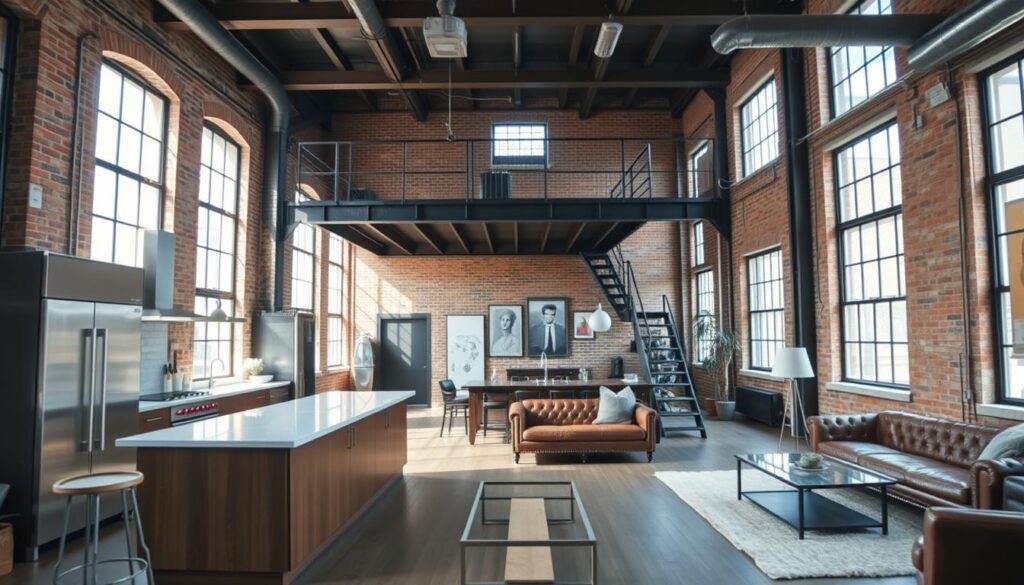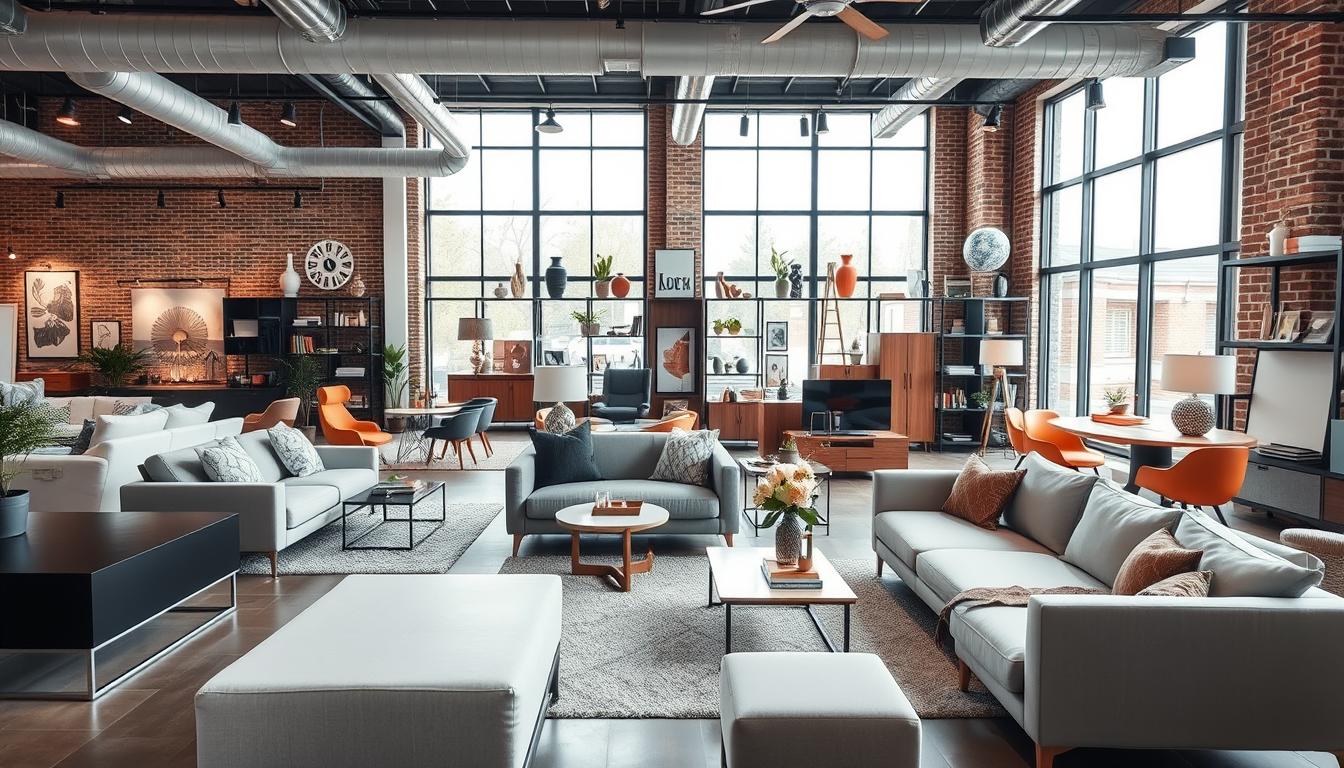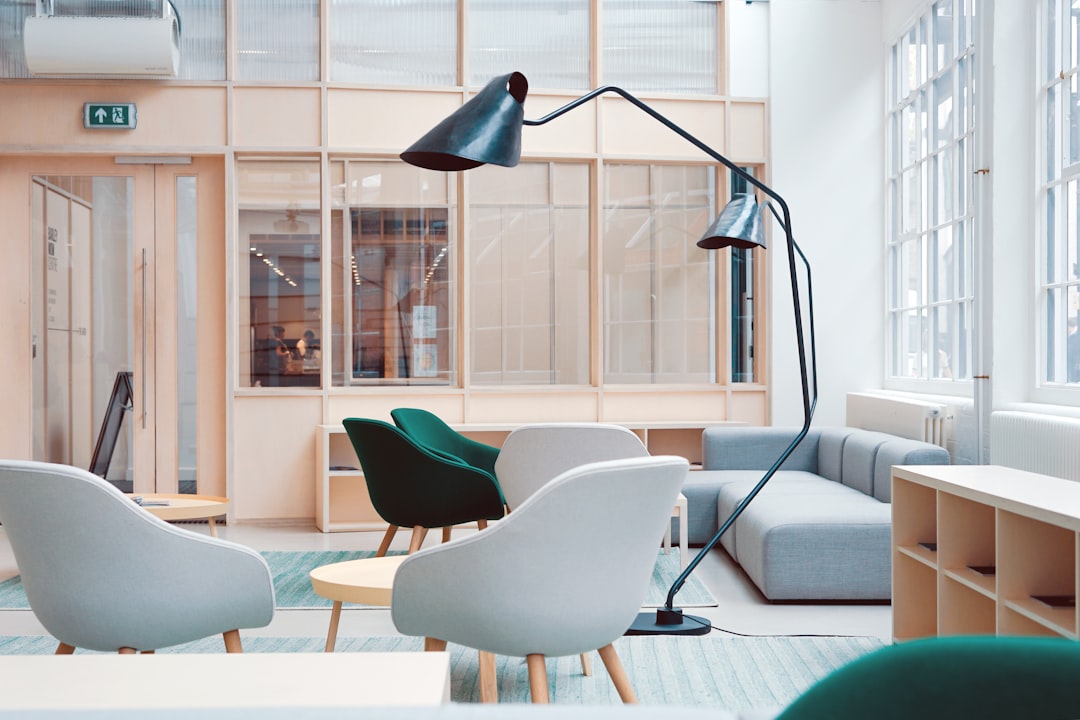Did you know that decorating our homes can really affect our mood and how productive we are? With so many interior design styles out there, picking the right one for your home can feel like a big task.
We’re here to help you explore the most popular interior design styles. We’ll show you what makes each style unique and what features they have. Whether you’re redoing your home or just looking for ideas, our guide will give you the info you need to choose the perfect look for your space.
Key Takeaways
- Understanding the characteristics of various interior design styles
- Identifying the key features of popular design styles
- Learning how to choose the perfect style for your home
- Gaining inspiration for your home renovation or decoration project
- Making informed decisions about your interior design choices
Understanding Interior Design Styles
Knowing the different interior design styles is key to making a home that shows your personality. The style you pick greatly affects your living space’s look and feel.
Choosing an interior design style is more than just looks. It’s about making a space that works well for you. Styles like modern interior design and traditional interior design each bring their own vibe to your home.
The Importance of Style in Interior Design
The style of your interior design sets the mood of your space. It can turn a room into a cozy spot or a modern, sleek area. Style is what turns a house into a home, where you can relax and spend time with family.
A good style choice also makes your space more functional. For example, modern interior design is great for busy homes because it’s simple and practical. On the other hand, traditional interior design adds warmth with classic furniture and details.
How Style Affects Mood and Functionality
The style you pick can deeply affect your mood and how you use your space. A minimalist style can bring calm, while a bold style can energize a room.
Also, your interior design style can change how you use your space. A well-designed room can make moving around easier and improve family interaction. Whether you like the clean look of modern interior design or the cozy feel of traditional interior design, your style choice impacts your daily life.
Classic and Traditional Design
Traditional interior design uses rich colors and ornate details. It creates a warm and inviting atmosphere. This style celebrates the past, bringing cherished elements into your home.
Key Features of Traditional Decor
Luxurious fabrics like velvet, silk, and linen are key. They add depth and sophistication to a room. These materials are used in upholstery and drapery.
- Intricate patterns and ornate details are also hallmarks of traditional design. They’re often seen in furniture, wallpaper, and other decorative elements.
- Statement furniture pieces, like carved wooden chairs or tufted sofas, are central to traditional looks.
For more inspiration, check out our guide on interior design styles. It helps you find the perfect look for your space.
Notable Color Palettes for Traditional Styles
Traditional design often uses warm neutrals like beige, cream, and taupe. These colors provide a soothing backdrop for richer accent colors.
- Deep jewel tones like emerald green, sapphire blue, and ruby red add luxury and elegance.
- Earth tones, including shades of brown and tan, create a cozy and welcoming atmosphere.
Choosing the right color palette complements your traditional decor. It creates a harmonious and inviting space that feels both classic and contemporary.
Modern Interior Design
In modern interior design, we aim for a perfect mix of looks and use. This style is all about simplicity, clean lines, and not too much decoration.
Characteristics of Modern Aesthetics
Modern design stands out with clean lines, simple shapes, and lots of empty space. This makes rooms feel bigger and calmer.
Key Features of Modern Design:
- Sleek, low-profile furniture
- An emphasis on functionality
- Minimal ornamentation
- Use of industrial materials like steel and concrete
Design experts say, “Modern design is more than looks; it’s about living well.” (Learn more about modern interior design).
Popular Materials in Modern Design
Modern design loves materials that make it look sleek and new. Glass, steel, and concrete are favorites. They’re tough and make spaces look great.
| Material | Characteristics | Use in Modern Design |
|---|---|---|
| Glass | Transparent, sleek | Used in partitions, tables, and decorative elements |
| Steel | Strong, industrial look | Used in furniture frames, lighting fixtures |
| Concrete | Durable, versatile | Used in flooring, walls, and decorative features |
If you want to bring modern design into your home, knowing about materials and looks is key. The right choices can make your space both stunning and useful.
Contemporary vs. Modern Design
Exploring interior design, we see that contemporary and modern styles are different. Each style has its own look and feel. Knowing the difference helps homeowners and designers create spaces that are both beautiful and functional.
Distinctions Between Contemporary and Modern
Modern design is from the early to mid-20th century. It’s known for simple lines, little decoration, and focusing on function. It’s linked to the International Style and Bauhaus movement, which valued simplicity and new ideas.
Contemporary design is more flexible and reflects today’s trends. It includes many styles and influences. It’s not tied to a specific time or style, but shows today’s design spirit.
How Trends Influence Contemporary Design
Today’s design is shaped by current trends. These trends include green materials and new technologies. For example, more people want eco-friendly design in their homes.
New tech and cultural changes also shape today’s design. This makes contemporary design always changing. It’s both exciting and a challenge to keep up.
To add contemporary touches to your home, try these:
- Keep up with design trends through magazines, online, and exhibitions.
- Try new materials and tech that fit your style.
- Mix different styles and elements for a unique look.
Minimalist Interior Design
Minimalist interior design creates calm and clarity with simplicity. It follows the idea that “less is more.” Every element has a purpose.
Principles of Minimalism
Minimalist design has key principles. A monochromatic color scheme brings cohesion and calm. Minimal ornamentation means fewer decorative items, letting simplicity stand out.
It also values function over form. Furniture and decor are chosen for their use and purpose, not just looks. For more ideas, check out small lounge interior design ideas that follow minimalist style.
Benefits of a Minimalist Approach
Minimalist design has many benefits. It reduces clutter, leading to a more organized and peaceful space. With fewer possessions, focus and clarity improve.
It also brings calm and well-being. Minimalist spaces feel spacious and airy, promoting relaxation and reducing stress. Minimalism offers unique benefits for our living spaces.
Industrial Style
Industrial style focuses on function and raw materials. It’s loved for its simple yet tough charm.
Industrial design comes from old factories and warehouses. These places had exposed brick, metal beams, and reclaimed wood. A design expert says, “The beauty of industrial design is its honesty. It celebrates the raw, unfinished parts that make a space special.” This look is popular among homeowners and designers for its urban, edgy vibe.

Origins of Industrial Design
The industrial style started in the late 19th and early 20th centuries. Factories and warehouses were built to be functional. They had exposed ductwork, brick walls, and concrete floors, designed for use, not for looks.
Common Elements of Industrial Spaces
Some key parts of industrial interior design are:
- Exposed brick and concrete
- Metal beams and ductwork
- Reclaimed wood accents
- Open layouts and high ceilings
- Vintage decor and industrial artifacts
To add industrial style to your home, show off your building’s structure. Use metal lights or reclaimed wood shelves for industrial flair. For more ideas and advice on industrial interior design, check out design expert resources.
By using industrial design‘s raw elements, you can make a unique, bold space that shows off your style.
Rustic and Farmhouse Trends
Many people choose rustic and farmhouse interior design for its cozy feel. These styles welcome warmth and comfort into your home. They bring the outdoors in, making your space feel inviting.
Identifying Rustic Design Elements
Rustic design uses natural materials like reclaimed wood and stone. These add history and authenticity. Earthy colors, like green, brown, and beige, also play a big role. They connect us to nature.
Some key rustic design features are:
- Exposed wooden beams and vintage fixtures
- Natural textiles, such as wool and linen
- Earth-toned color palettes
The Cozy Appeal of Farmhouse Style
Farmhouse style is similar to rustic but adds a touch of elegance. It includes shiplap and vintage decor. This creates a cozy, stylish space perfect for family gatherings.
To get the farmhouse look, try these:
- Vintage or antique pieces
- Soft lighting and warm textiles
- Natural materials and earthy colors
Mixing these elements makes your home warm and welcoming. It captures the essence of rustic and farmhouse styles.
Bohemian (Boho) Style
Bohemian interior design lets you show off your personality in your home. It’s all about freedom and creativity. You can make a space that really shows who you are.
Key Characteristics of Bohemian Design
Bohemian design is known for its vibrant and eclectic look. It celebrates being different with a mix of colors, patterns, and textures. Some key features include:
- Vibrant colors and bold patterns
- Layered textiles, such as throw blankets and rugs
- Eclectic decor, including vintage and global pieces
- Natural elements, like plants and wood accents
These elements make a space unique and cozy, yet full of life.
Mixing Patterns and Textures in Boho Spaces
Mixing patterns and textures is a big part of Bohemian design. Start by using different fabrics like velvet, linen, and cotton. Layer rugs and throw blankets to add warmth and depth.
When mixing patterns, don’t be shy. Combine bold and subtle designs. For example, pair a bright floral with a calm geometric. The trick is to find a common color to link them all together.
Embracing Bohemian design lets you create a space that’s truly yours. It shows off your unique style.
Mid-Century Modern Design
Mid-century modern design is a big hit in today’s homes. It’s all about clean lines and organic shapes. This style came up in the mid-20th century and focuses on being functional, simple, and nature-friendly.
It’s known for using natural materials like wood, leather, and woven fibers. These materials are often left in their raw state. This adds warmth and texture to any room.
Essential Features
The key features of mid-century modern design are:
- Clean lines and minimal ornamentation
- Organic and geometric shapes
- An emphasis on functionality and simplicity
- The use of natural materials
- Integration with nature through large windows and outdoor spaces
Charles Eames, a famous designer, once said, “The details are not the details. They make the design.” This shows the careful attention to detail in mid-century modern design.
“The details are not the details. They make the design.”
Iconic Furniture
Mid-century modern design is also famous for its iconic furniture. These pieces are a big part of the style. Some of the most well-known include:
| Furniture Piece | Designer | Description |
|---|---|---|
| Eames Lounge Chair | Charles and Ray Eames | A molded plywood and leather chair known for its comfort and sleek design |
| Noguchi Coffee Table | Isamu Noguchi | A simple, sculptural coffee table made from glass and wood |
To bring mid-century modern design into your home, look for statement furniture. Try an Eames Lounge Chair or a Noguchi Coffee Table. Also, use natural materials and geometric patterns in your decor and textiles.
Choosing the Right Style for Your Space
There are many interior design styles to pick from. Choosing the right one can be tough. We need to think about several things to make a good choice.
Key Considerations
When picking a style, think about your lifestyle, what you like, and your home’s architecture. For example, modern style fits well in a modern home. Traditional style is better for classic or vintage homes.
Blending Different Styles
Mixing different styles can make your space unique and balanced. You can mix modern furniture with traditional decor. Or add industrial touches to a rustic setting. This way, your space can show your personality and meet your needs.
Knowing the different styles and thinking about your situation helps. You can choose a style that fits your space perfectly.



